3 Permaculture Garden Projects to Get You Started!
Imagine buying less compost, growing more food and flowers while lowering water use, all by setting up our gardens to mimic the way nature multitasks... Here are three permaculture garden projects you can start today!
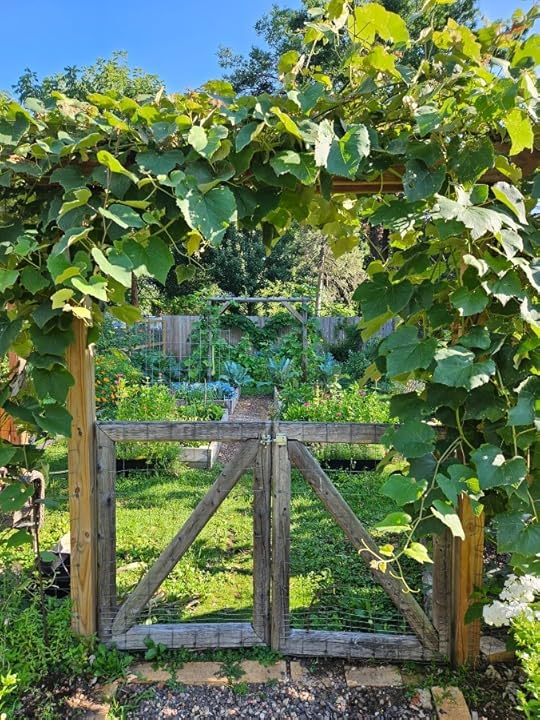 A grapevine adds shade, habitat (a robin nests in the vines), and food for our family!
A grapevine adds shade, habitat (a robin nests in the vines), and food for our family!Permaculture offers exciting and common-sense ways to take environmental action in our own yards by working with nature. We can be part of the climate solution; one plant, compost pile, or rain barrel at a time.
The idea of permaculture has been around since the dawn of time, but the term was coined in the 1970s when two Australians joined the concepts of ‘permanent’ and ‘agriculture’. Since then, it has evolved to include the central ideas of earth care, human care, and fair share, supported by a dozen principles.
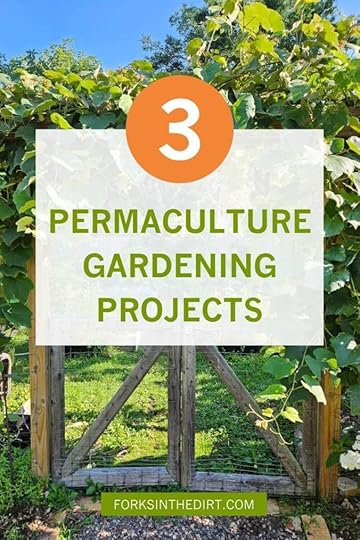
Permaculture Defined: The harmonious integration of landscape and people, and a framework for creating self-sustaining agricultural ecosystems.
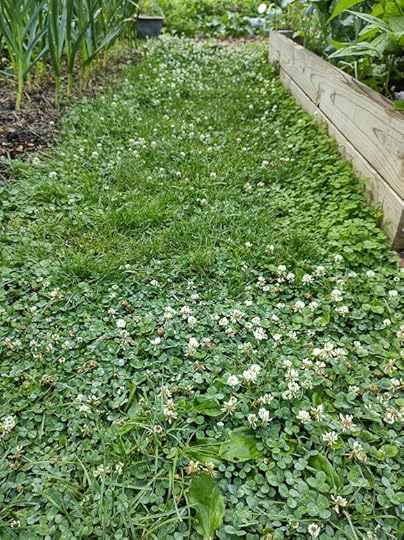 Adding clover to the vegetable garden or lawn increases biodiversity, nectar, and drought tolerance all while fixing nitrogen.
Adding clover to the vegetable garden or lawn increases biodiversity, nectar, and drought tolerance all while fixing nitrogen.As you practice permaculture, you’ll start seeing your land and the things living on it as interconnected resources working together to sustain each other. You’ll notice how each plant, insect, and rain drop serves multiple functions. In an undisturbed forest, this kind of system has slowly matured over hundreds of years. Today we can help recreate nature’s self-sustaining systems by designing with existing resources to benefit the whole.
Permaculture functions best as a whole system’s approach. To get us started, we’re highlighting a few practices while acknowledging that as we work on getting better techniques, plants, and soil in place—it is the relationships between these elements that make permaculture so powerful.
Stacking Functions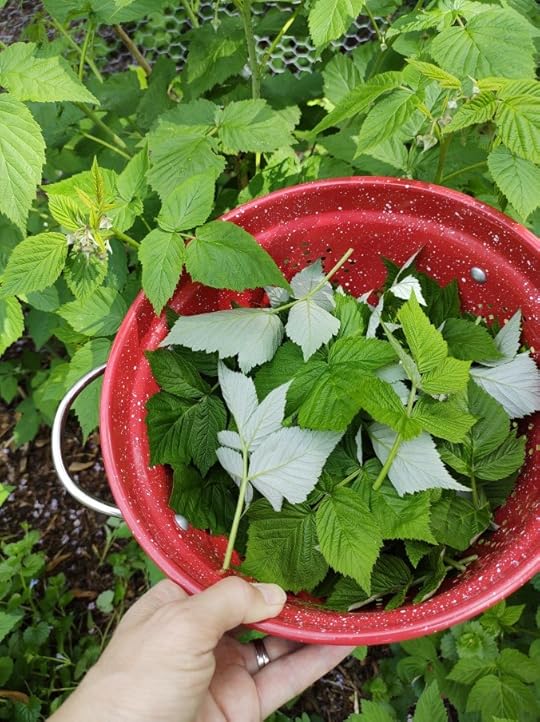
Stacking Functions is a central concept in permaculture. Learning the plants’ functions will help us place the plant into our design.
Examples of multiple functions:
Raspberries: Growing berries, leaves for tea, attracting pollinators, and conserving soil structure as a perennial.
Yarrow: Dynamic nutrient accumulator (phosphorus, potassium and copper), attracts beneficial insects, repels pests, breaks up compacted soil.
Clover: Nitrogen fixer, conserves soil, drought tolerant, attracts beneficial insects.
Permaculture suggests that garden designs flow from observing your yard and learning from it; where is your yard sunniest, driest, windiest, wettest? As we explain the following projects, consider how these would best fit into your space with your lifestyle and garden goals.
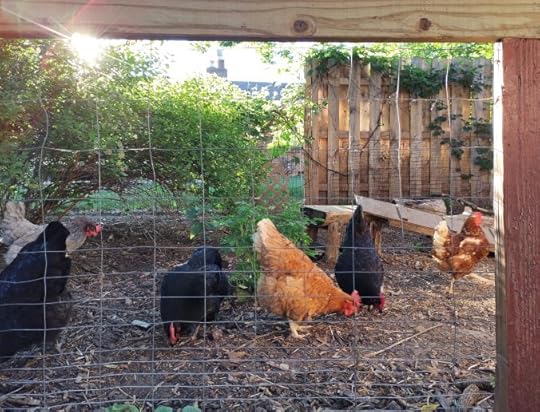 Consider adding chickens to your backyard to increase your permaculture impact!Permaculture Garden EthicsEarth Care
Consider adding chickens to your backyard to increase your permaculture impact!Permaculture Garden EthicsEarth CarePeople Care
Fair Share
Principles of PermacultureObserve and InteractCatch and Store EnergyObtain a YieldApply Self-regulation and Accept FeedbackUse and Value Renewable Resources and ServicesProduce No WasteDesign from Patterns and DetailsIntegrate Rather than SegregateUse Small and Slow SolutionsUse and Value DiversityUse Edges and Value the MarginsCreatively Use and Respond to Change1. Compost Options
As author Toby Hemenway says, “start with the soil” in his book, Gaia’s Garden: A Guide to Home-Scale Permaculture. Composting is one of the best ways to continually build and replenish soil. It’s also one of the only ways to replenish trace elements like magnesium and copper, etc. (which plant roots pull from the soil) back into the soil. But did you know there are many ways to compost?
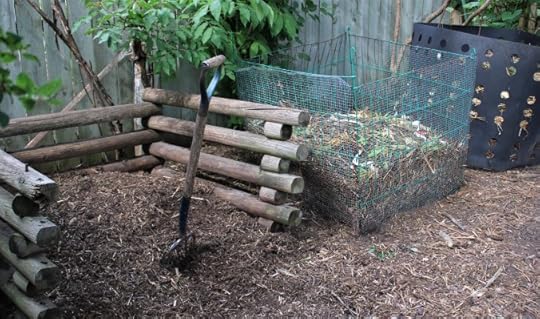 Compost areas can be made with what you have!
Compost areas can be made with what you have!You can set up traditional compost piles in your yard. You could vermicompost, which uses worms to decompose food scraps within a closed bin, to keep composting indoors during winter in northern climates. There are also self-contained units that make composting an option for those without much outdoor space.
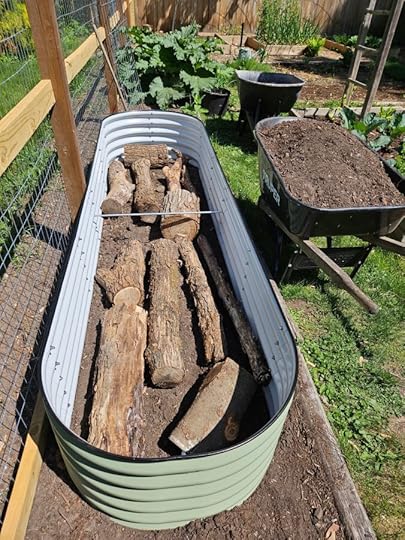 Filling a bed the Hugelkultur way.
Filling a bed the Hugelkultur way.As we learn more about the soil food web, more people are starting No Dig gardening. This style of gardening minimizes soil disturbance and composts in place. This can look like ‘chop + drop’, where you cut down non-diseased plant material and let it first act as mulch and then slowly decompose in the garden where it grew.
Or try Hügelkultur gardening, which uses organic materials found on your property to build soil health. Start with larger pieces of dead wood at the base, then branches. Top with layers of organic materials, same as what you’d add to a compost pile, but right in the garden. This applies the permaculture principle of using the ‘available services’ of the insect and microorganism world that are already present, while skipping the step of hauling and turning compost.
2. Planting Perennial GuildsCommunal Composting
If you really can’t or don’t want to compost yourself, remember, most cities also have yard waste drop-off sites and many have started “Organics Recycling” options.
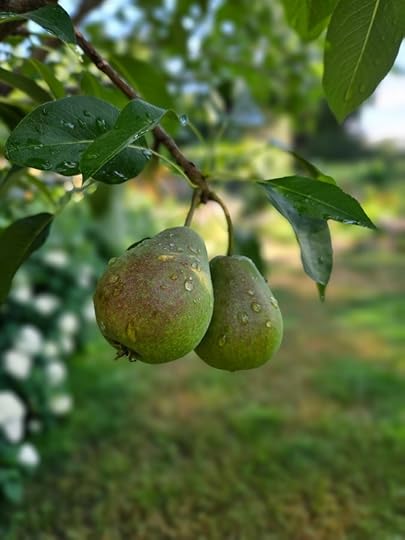 Fruit trees make excellent Permaculture additions.
Fruit trees make excellent Permaculture additions.Planting edible landscapes is a great way to add function, biodiversity, and healthier plant communities to your permaculture garden. Interplanting and companion planting might be more familiar terms to gardeners and are similar to plant guilds. Think the “Three Sisters” Indigenous way of planting, but make it perennial. Choosing perennial instead of annual edibles also helps the garden develop deeper soil food web relationships.
Many cold-climate edible perennials make wonderful guild plant options. These include herbs like chives, clary sage, horseradish, oregano, and thyme, to vegetables like asparagus, perennial kale, ramps, rhubarb, sorrel, walking onions, and fruits like blueberries, currants, grapes, raspberries, rhubarb, and strawberries. Fruit- and nut-producing trees add another layer of food and height to the landscape. A food forest might seem unattainable—but we can imitate nature’s way of growing by starting with a tree or two. Perennial ground covers, herbs, shrubs, vines, dwarf and full-size trees can all be interplanted.
A typical fruit tree guild will have a ring of bulbs at the outer drip line, with mulch producing, insectary, and nutrient accumulating plants under the canopy. The exact plant choices would take into consideration resource sharing for root depth, nutrients needed, etc.
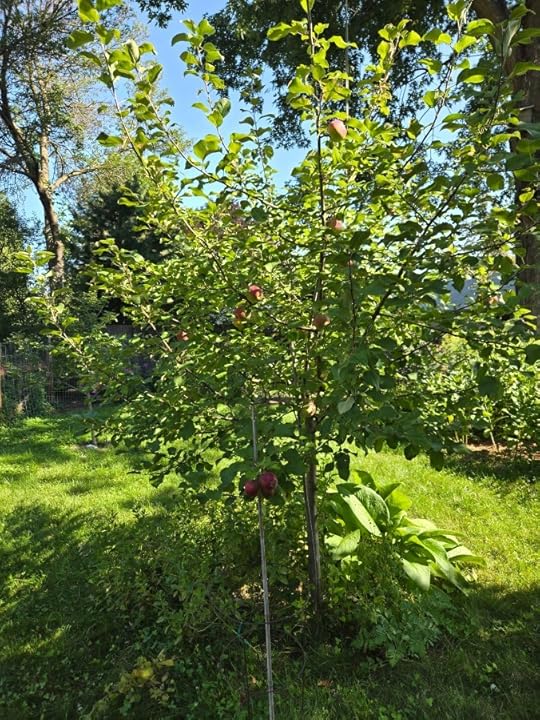 Apple Tree Guild in action
Apple Tree Guild in actionAPPLE TREE GUILD
Semi-Dwarf Apple TreeComfreyYarrowWhite CloverFeverfewAnise HyssopMonardaChives/OnionsWhile these mini ecosystems take longer to mature and require more upfront planning, in the long run they’ll reduce the need for care, fertilizer, and pest management. They’ll end up supporting themselves, a permaculture garden goal. By adding plant diversity, you’re also growing more overall resilience.
3. Water Collection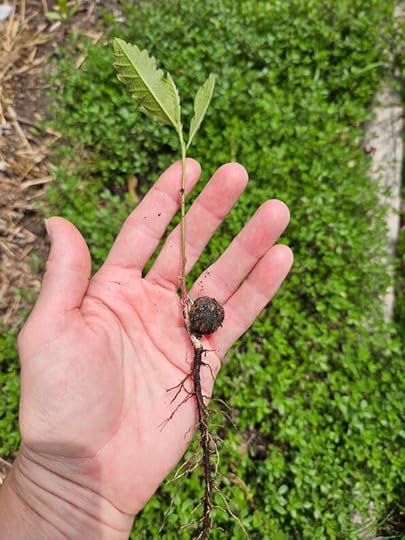 Mature oak trees can cycle (absorb and transpire) around 100 gallons of water daily.
Mature oak trees can cycle (absorb and transpire) around 100 gallons of water daily.As gardeners living through climate chaos, we understand the value of rainwater as a resource. There are ways to make the most of this resource and collect water that go beyond planting rain gardens.
A smart place to store water is the soil, and we can do this by designing swales. Swales function best on sloping land. They’re made by digging shallow trenches and adding berms on the lower side to slow run-off and let water percolate down into the soil. This creates an underground ‘lense’ of water as a reserve that deeper plant roots can access.
Capturing water from rooftops into rain barrels is an easy way for smaller and flatter properties to collect water. You run water from gutters down a spout and directly into a barrel for holding until needed. Place your barrel in an easy to access spot, and make sure to keep a filter secured to the intake area to catch debris before entering the barrel.
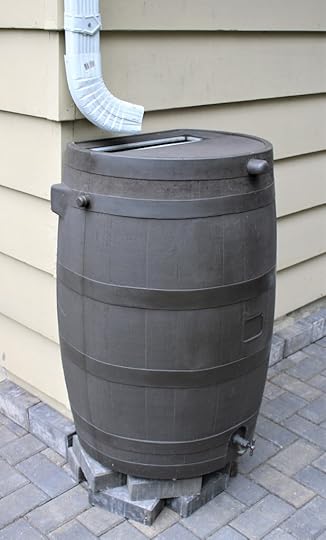 Simple water barrels gather at least a small amount of run off from rooftops.
Simple water barrels gather at least a small amount of run off from rooftops.There’s been ample research into whether chemicals from petroleum-based shingles leech into the water collected. Findings continue to be within a safe range. Rain barrel water is usually slightly acidic, which is excellent for nutrient uptake by plants. In general, harvested rainwater is best applied at the soil level.
As an extra safety precaution, you can wait to harvest produce watered with rainwater a full day after watering to benefit from the sun’s ultraviolet light disinfection of any possible contaminants. More information is available under on the EPA’s website.
Permaculture Gardening in PracticeAt its heart, permaculture is a commonsense approach to welcoming sustainable gardening practices into our lives. It also puts us in the mindset to react to our ever-changing environment with adaptive, fun, and imaginative solutions. It reminds us that everything, even us gardeners, are part of nature. Let’s get out there and harness our existing resources!
Have I inspired you to Dig Into Permaculture?
I originally wrote this article for Northern Gardener magazine. It appeared in a shorter form in the Spring 2024 issue.
Michelle
The post 3 Permaculture Garden Projects to Get You Started! appeared first on Forks in the Dirt.
Forks in the Dirt
- Michelle Bruhn's profile
- 4 followers



